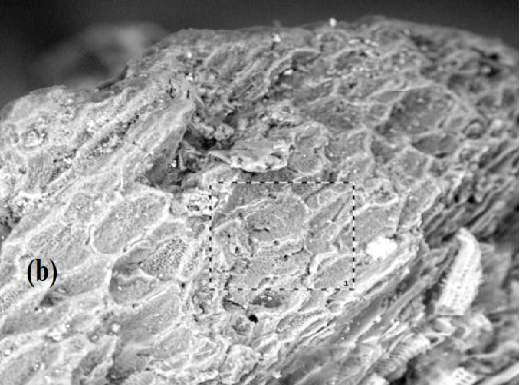Production Process of Large Pore Size Activated Carbon from Palm Kernel Shell using Sodium Chloride as An Activator
Abstract
This study aimed to determine the yield of activated carbon, iodine number, and surface area of palm activated carbon. Samples were produced by using sodium chloride (NaCl) as an activator. Palm shells that had been produced by the milling process were then sieved with a 12 mesh sieve and soaked in 20 % NaCl solution. The sample solution was heated over a water bath at 70 oC and continued with the drying process at a constant temperature of 105 oC. The activated shells continued the pyrolysis process at temperatures of 300, 400, and 500 oC for 3 hours. The activated carbon obtained from the pyrolysis process was weighed and then washed using hot distilled water. The samples were dried in an oven at a temperature of 105 oC for 24 hours. The results were analyzed for iodine number using iodometric titration method, surface area using Brunauer- Emmett-Teller (BET) method, and pore structure using the Scanning Electron Microscope (SEM) method. The results showed the best yield was 38.13 % obtained at 20% NaCl and a temperature of 400 oC. The best iodine number was 767.745 mg/g and surface area was 6.790 m2/g, pore volume 4.377 cc/g with pore size 9.781 A.
Downloads

Copyright (c) 2022 Ahmad Nurdin Nst, Aliyah Fahmi

This work is licensed under a Creative Commons Attribution-NonCommercial-NoDerivatives 4.0 International License.
Authors who publish with this journal agree to the following terms:
- Copyright on any article is retained by the author(s).
- The author grants the journal, the right of first publication with the work simultaneously licensed under a Creative Commons Attribution License that allows others to share the work with an acknowledgment of the work’s authorship and initial publication in this journal.
- Authors are able to enter into separate, additional contractual arrangements for the non-exclusive distribution of the journal’s published version of the work (e.g., post it to an institutional repository or publish it in a book), with an acknowledgment of its initial publication in this journal.
- Authors are permitted and encouraged to post their work online (e.g., in institutional repositories or on their website) prior to and during the submission process, as it can lead to productive exchanges, as well as earlier and greater citation of published work.
- The article and any associated published material is distributed under the Creative Commons Attribution-NonCommercial-NoDerivatives 4.0 International License.





_copy1.png)










